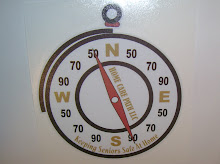CPAP – BIPAP
CPAP is continuous positive airway pressure (single pressure
setting)
BIPAP is bilevel positive airway pressure (2 pressure setting)
With BIPAP the inhalation force is a bit stronger than the
exhalation force – so easier to exhale
Inhalation and exhalation usually occurs through the nose
only
The purpose of the air pressure is to keep the throat
muscles (sleep apnea) from collapsing – this is reducing obstructions- acting
like a splint for a tight airway.
The primary medical doctor and the respiratory department
use a titration study when prescribing the level of pressure – only a physician
can prescribe the pressure amounts
The air pressure is measured in centimeters of water
BIPAP is prescribed with lung or neuromuscular disorders –
often the patient will try the CPAP first and if failed attempt the medical
doctor will prescribe BIPAP – the prescription usually states BIPAP or Bilevel
Patients usually need 3 to 4 weeks or more to get used to
CPAP/ BIPAP try to use with all sleep and naps
Many different machines and masks. The mask and tubing guide the air stream from
the machine to the person this is called delivery.
To care for the mask simply wash daily with gentle soap or
baby shampoo and let air dry.
Medicare- Medicaid will usually pay for complete new mask
about every 6 months
Humidification – moisture helps reduce complaints of dryness-
some use nasal spray before sleep
Nasal irritation some use non-petroleum based cream in
nostril
Some use pads between mask and skin but want tight seal to
keep airway open
Keep machine up off floor and near area of sleep
Significant weight change can cause your pressure needs to
change

No comments:
Post a Comment